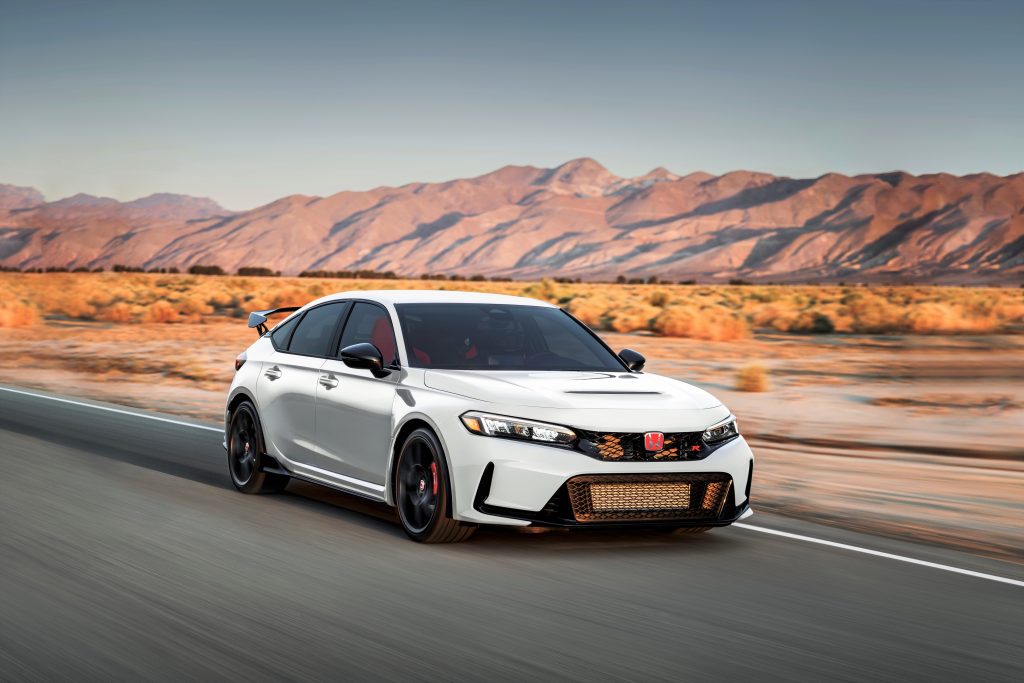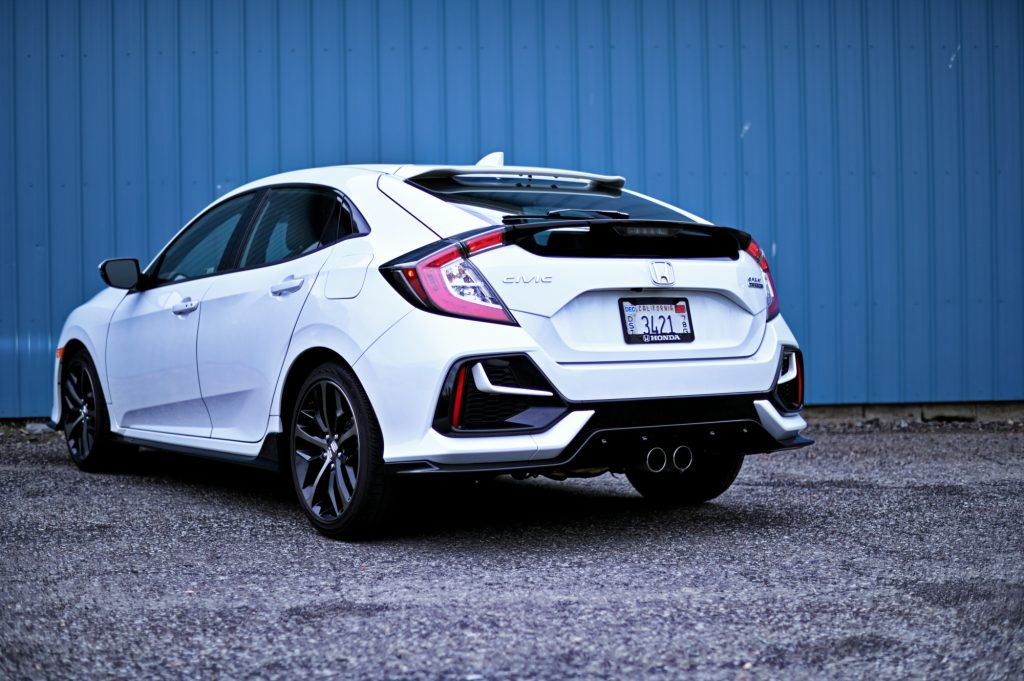Test Drive: 2018 Honda Civic Type R
Though there’s a visually noisy facade, that’s not the point of this affordable ride
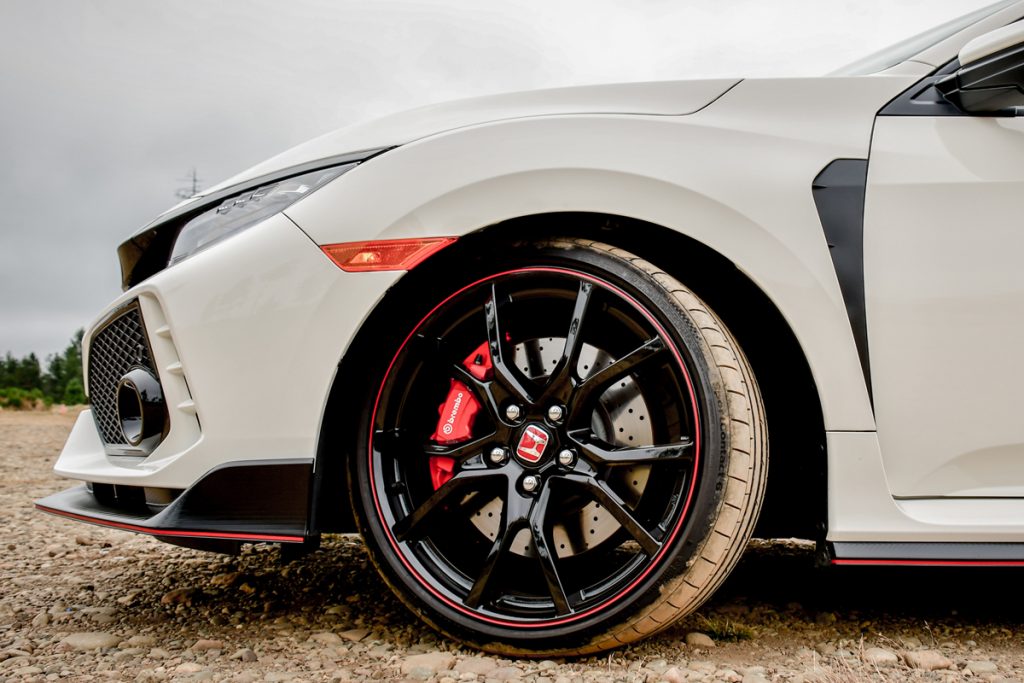
by Michael Frank
Trying to photograph the 2018 Honda Civic Type R is a bit like trying to snap shots of the recent eclipse: after a while, your eye gets exhausted. Full disclosure: this is a face only a mother could love. Or, probably, 6,000+ American car fans who know an astounding bargain when they see one, and will weight the astonishingly complex ground effects, downforce tricks, and cooling ducts against what this car was designed to do—go faster, under greater control, than anything else in its class.
Fans will know that this is the first Type R, always the hottest Civic in each model cycle, to be sold in North America. Other Type Rs (in 1997, 2001, 2007 and 2009) were sold only in Japan and in Europe, but Honda’s 10th-generation Civic is being built on a single platform worldwide, and that means a crash test of a Civic in the US is akin to a crash test of a Civic Type R, which lets Honda sell us both their meekest, $18,740, 158 horsepower Civic, one without the ultra-wide, ultra insane styling—and the 306 horsepower, $33,900 Type R.
Before getting to how it drives, it’s important to understand that Type R is an exercise in making the car stick to the ground at speed. Every other consideration was tossed aside. So we’ll start with what all these extra wings, fins, slits and tails are designed to do.
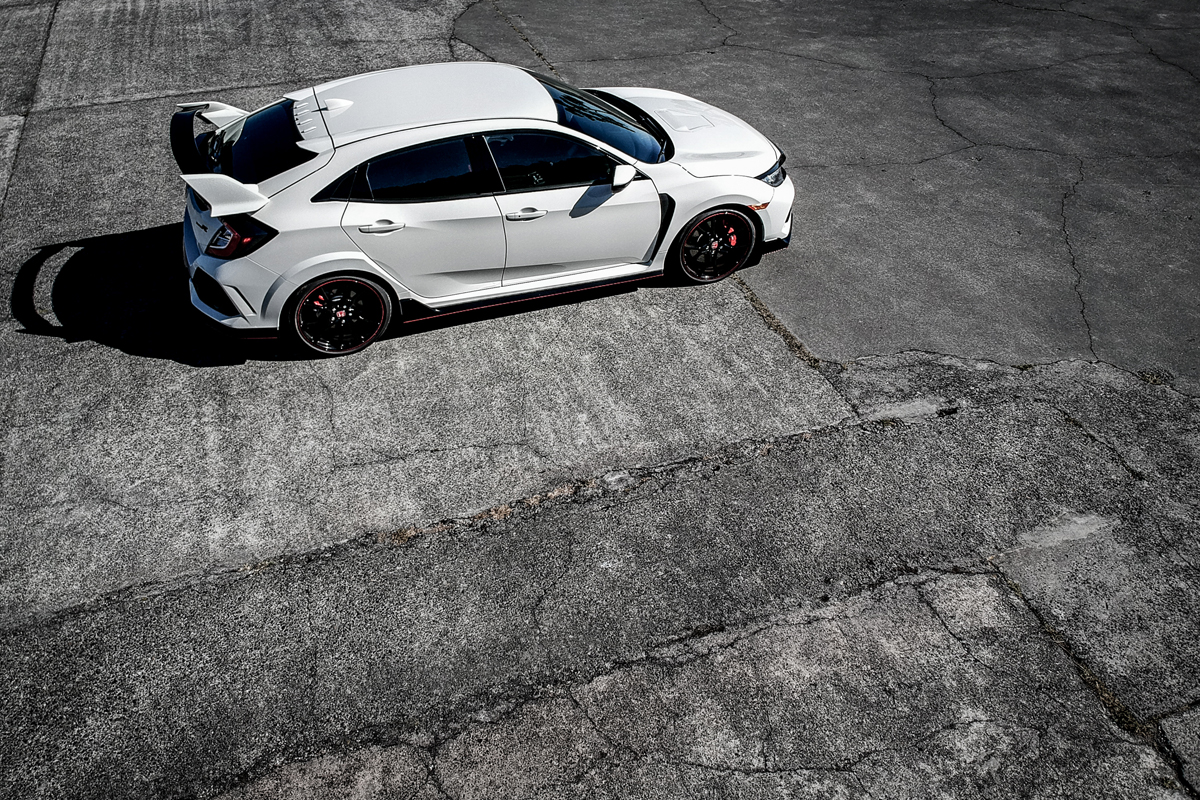
Groundforce + Cooling Effects: Front Half
The Civic Type R was designed to compete with other “hot hatches.” (Specifically Volkswagen Golf R, Ford Focus RS, and Subaru WRX STi.) That a Ford Mustang GT is faster in a straight line, and competes closely on price, apparently doesn’t matter. Hot hatch people only think about hatches, if you buy Honda’s argument. This is relevant because it gives your brain something to think about when eyeballing the Type R—and who Honda’s has identified as their prime buyer.
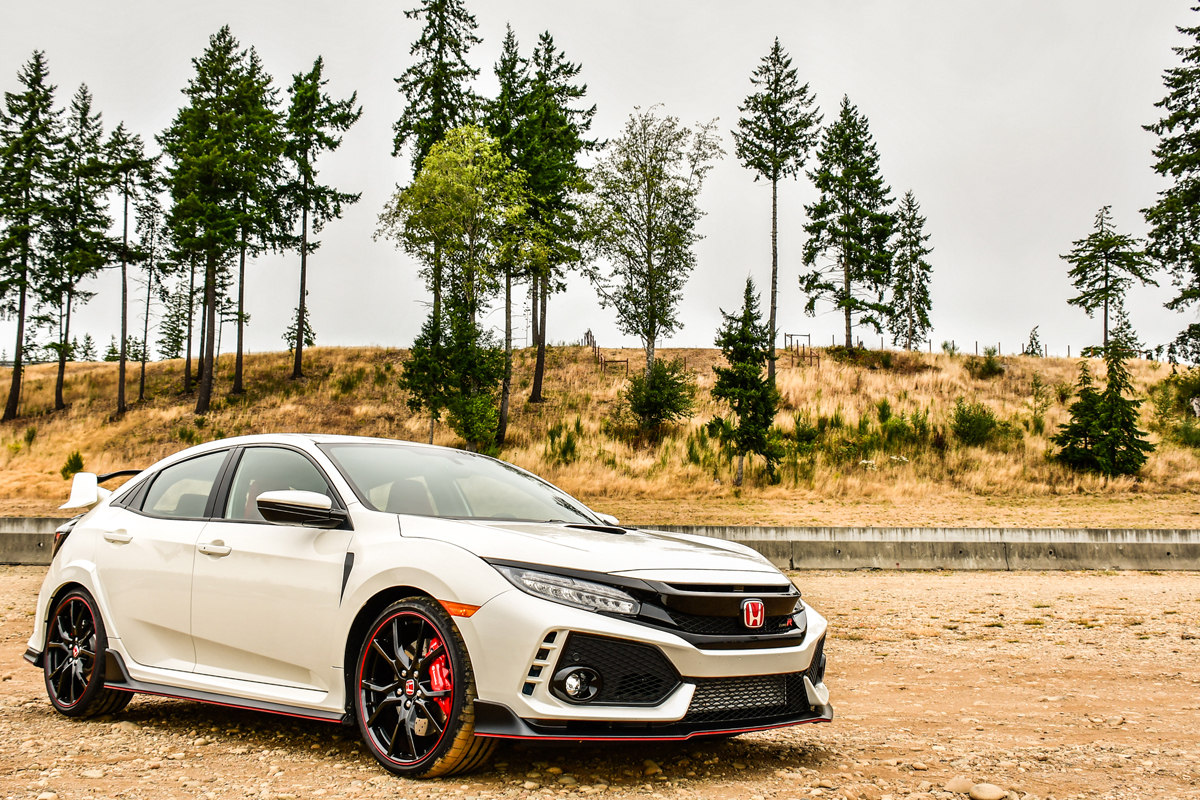
As for what all this stuff is doing on the car, Rob Keough, senior product planner on the Type R, says that somewhat subtle hood-scoop isn’t for the intercooler, like with Subaru: “We have a front-mounted intercooler for the turbo, not top-mounted,” he explains. Keough says that while the new Type R was extensively wind-tunnel tested in Japan, the hood-duct came fairly late in development, with the aim of adding both additional cooling and extra downforce.
Likewise, at the very front of the car Honda added a splitter to the full width of the lower edge of the front bumper (that red rim right at the bottom of the fender). This both prevents air from getting beneath the Type R and acts in concert with significant side slits at the leading edge of the front fender, beside the fog lamps, that suck in air and channel it overtop of the front wheels, quieting turbulence at the front of the car at speed.
Lastly, Honda engineers repeat the trick just ahead of the rear wheels, again allowing smoother airflow here, while the very substantial side skirts fend off air from moving underneath the car. Honda says that because their hot hatch has front-wheel drive it can ride a bit lower to the ground, an advantage for downforce. Honda has clearly gone farther than its rivals in attaching all of these effects. While the wheelbase is a few inches wider, which you can feel on the track (along with 20-inch, 30-series tires that stick like glue), a lot of that width is down to bulbous fenders to accommodate the fatter tires, and the staunch side sills.
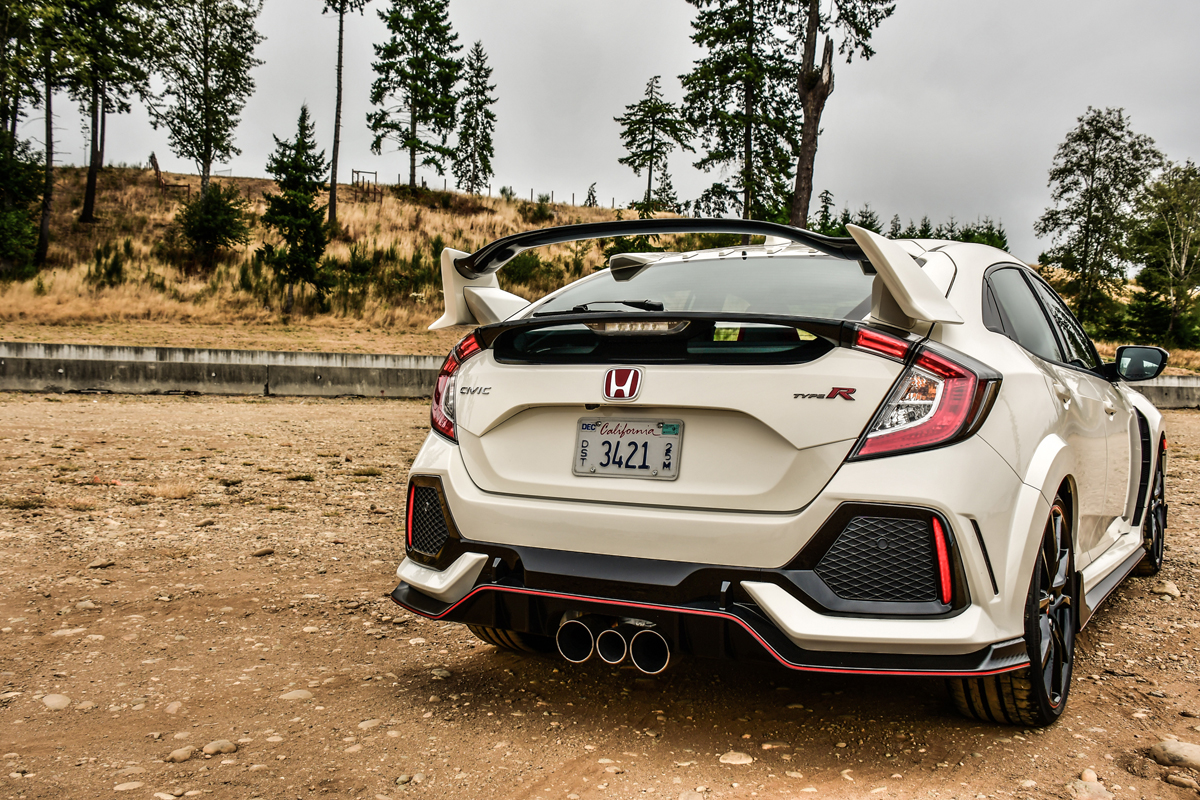
Preventing Lift at the Rear
From the ground up, there’s a red-accented lip that angles above the triple exhaust pipes, and this is a diffuser designed to “release” drag from the back of the car. Then there’s a rear spoiler that’s tied directly into the rear brake-lights, and a subtle, but very useful slit beneath that provides rearward vision. Keough says that despite the visually busy hatch area, Honda sought to make sure every bit of aft visibility was preserved. Also, a double-hatch view is a Honda hatch signature going way back to CRXs of the 1980s.
Above the spoiler there’s the massive wing, also developed both in the wind tunnel with scale models and with full-size prototypes. Honda continued to refine the shape of the wing with data pulled in from track testing, and after more time on the track, added four small fins above the rear window glass, called “vortex generators,” that funnel more air over the rear wing to create additional downforce at high speeds.
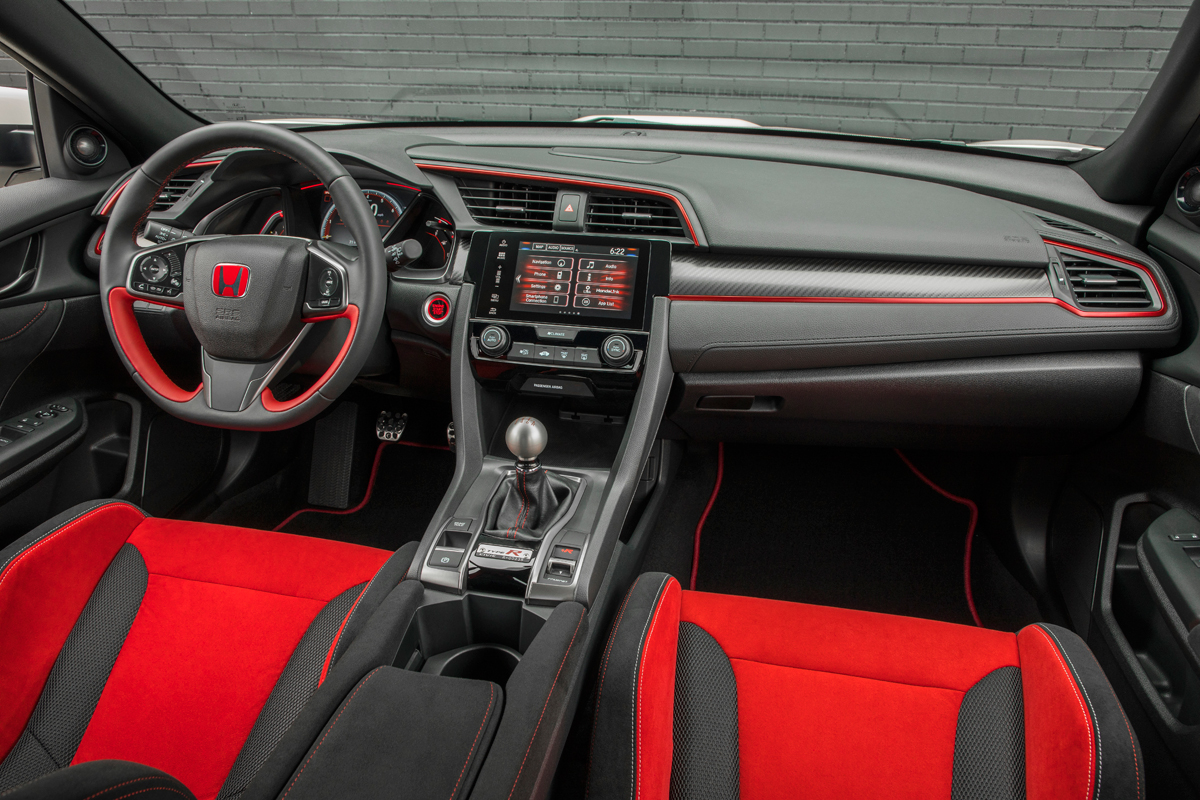
What Does it All Mean?
The Civic Type R barely weighs more than 3,000 pounds and rides on a short wheelbase. The reductive way to think about why it gets all of these effects is that they’re not “effects” at all. Think of the Killer B era of rally car racing, when every hot hatch had a massive roof wing, and you get the idea that this stuff matters: go fast in a short car and you might actually take flight. You need these aids to push the car into the pavement. Another way to look at it: one reason the Mercedes smart car doesn’t get better fuel economy is there’s simply not enough surface area to make it aerodynamic, and if you make it too slippery, it becomes unstable, like a hockey puck floating above the ice rather than sticking to it.
On the track you can’t actually feel any of the Type R’s effects working. What you don’t feel though is any spooky unweighting of the car. We had it well over 115mph in the straights and it felt nailed flat to the tarmac. Also what you cannot feel is the torque steer. The tiny two-liter turbocharged four hits its torque peak at only 2,500 rpm, but Honda brilliantly re-centered the stroke of the front suspension to be more vertical, effectively dialing out the tendency of the driven wheels to spin and jounce unless you’re actually trying to induce torque steer.

At speed on the track this can be played to excellent advantage, because it allows you to stay on the throttle in sweeping turns (where too-early gas and a hint of steering angle on a rear-drive car will dial in too much rotation). In very slow-speed corners you have to add half a heartbeat of patience before getting on the gas too soon, or you might risk scrubbing speed, but the Type R is supremely forgiving here as well. Stay in a taller gear (remember that early torque peak) and just squeeze the throttle slowly to gain on your rivals.
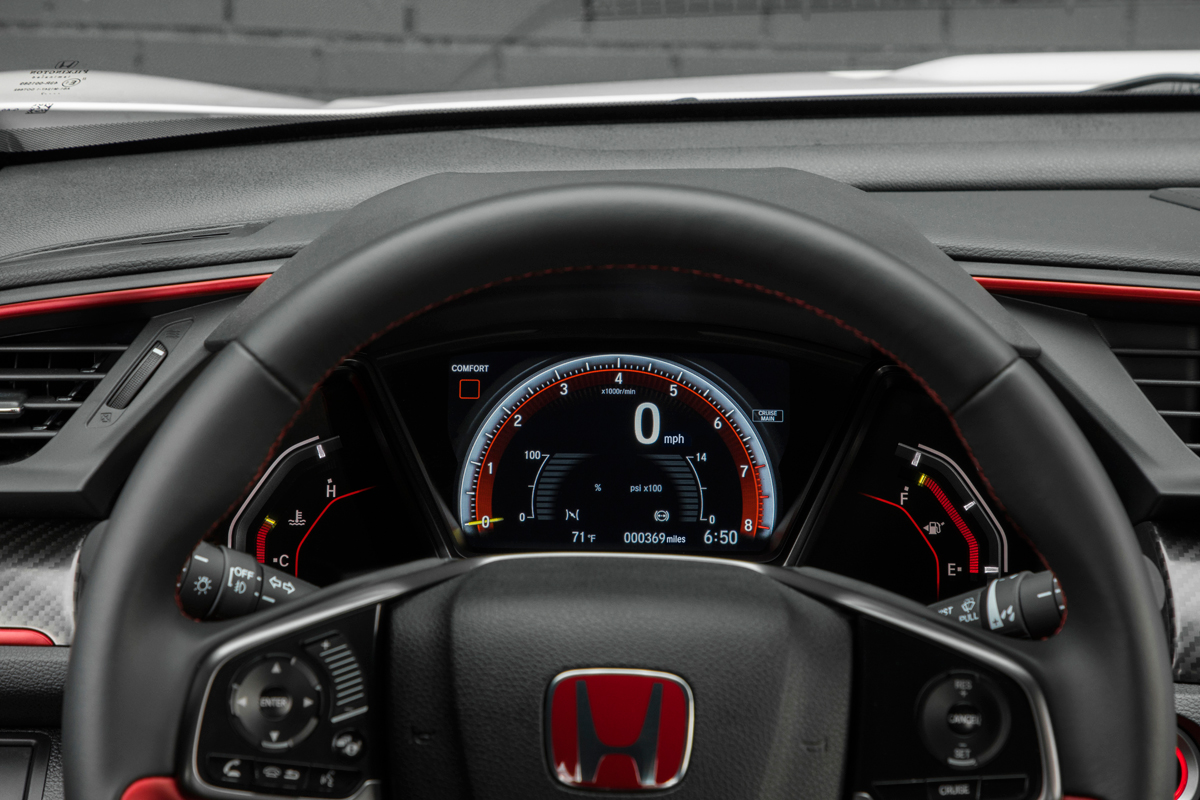
Honda also added active damping to the car that also works in concert with the electric steering. In the firmest setting the little Civic hunkers hard to the track and steering feel effectively increases, because steering boost is reduced even at slower speeds. Blessedly, in comfort mode, even with its ultra-thin performance rubber, the Type R isn’t brutal as a daily driver.
We chalk this last part up to something else you won’t necessarily see praised in chat forums: low weight. Civic Type R is a good 200 pounds lighter than its closest rival, and because it doesn’t have AWD, it feels snappier, like it’s fighting less to get up on its toes to react to inputs. And a lighter car is more fun around town, too, which is also a blessing.

No doubt, it’s visually noisy. Even in Competition White, a legacy color that Keough says dates to Civic and Acura Integra Type Rs from the 1990s, you’ll be hard-pressed to make peace even of the side view—likely the simplest angle. But get behind the wheel and even the loud, red bucket race seats (the only option) won’t distract you from driving. Snick through the very tight-ratio, six-speed gearbox and you’ll be delighted by the ease and capability the Type R offers. The closest comparison isn’t another hatch, it’s BMW’s 1M Coupe. Fast, yes. Capable, absolutely. And also forgiving as a daily driver. And unlike BMW, Honda’s committed to selling the Type R in America for at least the current generation of Civics.
Interior images courtesy of Honda, all others by Michael Frank
